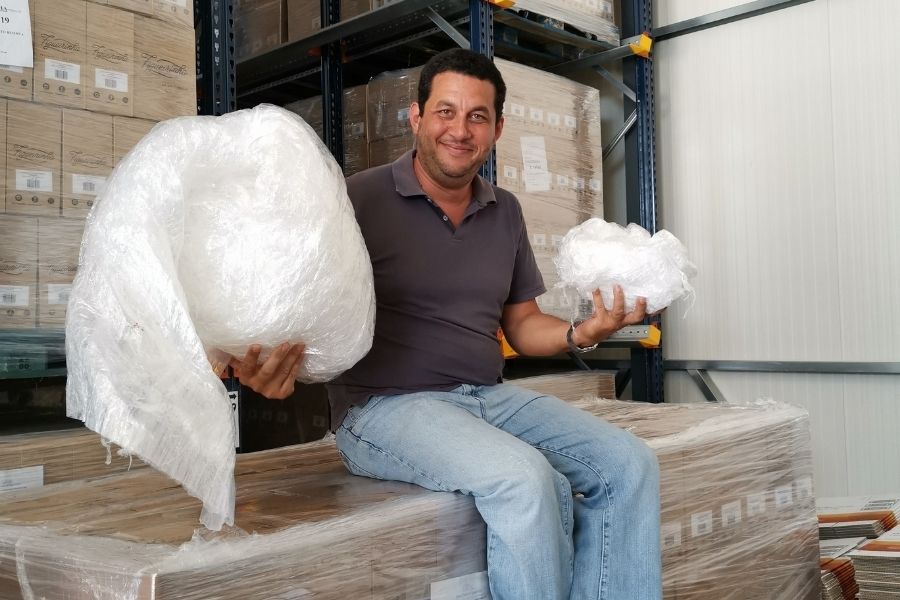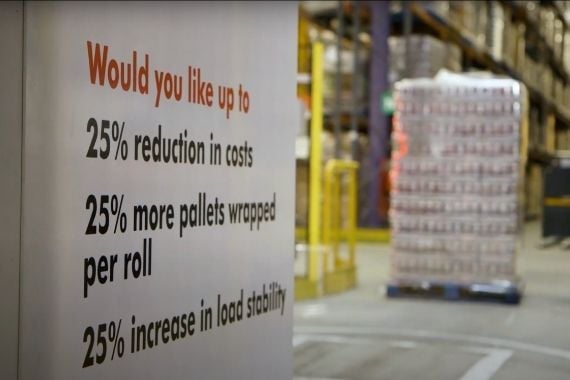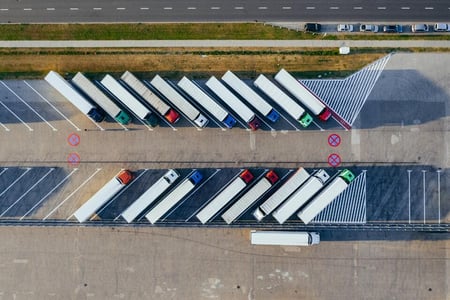In this blog, we will explore the pros and cons of plastic reduction and recycled plastics to see what you should be doing in your business.
Firstly, we need to establish what your priorities are:
- Do you want to reduce your costs, or are you happy to increase the costs?
- Do you want to reduce your plastic, or are you happy to increase plastic consumption?
- Do you want to improve your operational efficiency?
- Are you willing to compromise the quality of your pack/pallet?
These are all important things to consider before jumping into either plastic reduction or recycled plastics.
So, which is best?
In the perfect world, you would love to have both. Reduce total plastic consumption and end up with a product that doesn't have the Plastic Tax added. Is that possible? In some cases, yes. But for the majority of stretch film and shrink films, the technology isn't good enough yet for the masses to migrate to a plastic reducing PCW alternative. So, you must pick one.
Let's take a look at stretch film in particular. In the majority of simulations and trials we have carried out in the last six months, plastic reduction trumps 30% PCW Recycled products. But why? Let's explore an example.
| Film Comparison | Current Film | Tax Exempt Solution | Tax Exempt solution | Thinner Film |
|
Grade |
7mu | 10mu 30% Recycled | 12mu 30% recycled | 6mu |
| Total Wraps | 15 | 13 | 11 | 15 |
| Film Weight Per Pallet (grams) | 170 | 236 | 240 | 145 |
| Film Cost P/Roll | £7.20 | £5.88 | £6.60 | £6.20 |
| FilmWeight P/Roll | 1288 | 1242 | 1490 | 1104 |
| Pallets Wrapped P/Roll | 7.6 | 5.3 | 6.2 | 7.6 |
| Film Cost P/Pallet | £0.95 | £1.12 | £1.06 | £0.81 |
| Total Pallets Per Year | 70 000 | 70 000 | 70 000 | 70 000 |
| Total Spend per year | £66 521.74 | £78 210.74 | £74 416.11 | £57 001.82 |
This client was already on a very thin stretch film solution. Currently, the two best 30% PCW recycled content films are thicker than what they use. However, you can see that both are significantly higher in cost per pallet despite reducing the number of wraps per pallet as the thickness increased. This simulation above was carried out in March before the Plastic Tax was applied. Below, we can see the effects of the Plastic Tax. Even though the two central columns (10m and the 12mu) are exempt, the thinner 6mu film still costs less overall, even with Plastic Tax added.
| Total Annual Plastic Tonnes | 12 | 17 | 17 | 10 |
| Plastic Tax Per Kilo | £200 | £0 | £0 | £200 |
| Plastic Tax Due | £2 380 | £0 | £0 | £2 030 |
| Consumables Cost + Tax | £68 901.63 | £78 210.63 | £74 416.11 | £59 031.81 |
| Increase To Original | 3.58% | 17.6% | 11.9% | -11.3% |
Making a thin, high-quality stretch film requires the BEST quality raw materials to give it the necessary characteristics to secure your pallet without breaking on application. Adding PCW material means we are restricted on how thin we can go, meaning there are compromises in many cases.
Let's look at a scenario where 30% PCW film did give a genuine plastic reduction and cost reduction.
| Film Comparison | Benchmark - Current Prie | Benchmark | Plastic Tax Exempt |
|
Grade |
23mu Traditional Film | 15mu Nano | REC15 |
| Total Wraps | 13 | 13 | 13 |
| Film Weight Per Pallet (grams) | 689 | 462 | 460 |
| Film Cost P/Roll | £38.29 | £47.00 | £47.77 |
| FilmWeight P/Roll | 14 300 | 14 300 | 14 300 |
| Pallets Wrapped P/Roll | 20.8 | 31.0 | 31.1 |
| Film Cost P/Pallet | £1.84 | £1.52 | £1.54 |
| Total Pallets Per Year | 5 000 | 5 000 | 5 000 |
| Total Spend per year | £9 224.41 | £7 592.31 | £7 683.29 |
This customer was using a traditional 23mu film applied by machine. We showed them a 15mu film nano film and a 15mu 30% recycled content film. In this scenario, based on pre Plastic Tax prices, the 15mu nano film looks the best; however, when the tax effect is added, things change.
| Total Annual Plastic Tonnes | 3 | 2 | 2 |
| Plastic Tax Per Tonne | £200 | £200 | £0 |
| Plastic Tax Due | £689 | £462 | £0 |
| Consumables Cost + Tax | £9 913.41 | £8 054.31 | £7 683.29 |
| Increase To Current Solution | 7.47% | -13.00% | -16.71% |
Both still provide a benefit, but the Plastic Tax-exempt product is the best solution for this customer. Operational performance was very similar, so the customer went with the 30% Recycled option.
As with all new film endeavours, we follow our formula:
- Understanding your needs
- Assessing and benchmarking your current situation
- Prescribing 2-3 of the best films we have available to help you achieve your goals.
Regardless of your starting position, there is always room to achieve more plastic reduction, better operational efficiency, safer pallets and lower total annual costs. Achieving this means finding the right company that understands how to do this safely without causing risks to your operation.
Get in touch today with our expert team, who can help you decide which options are best your business.







